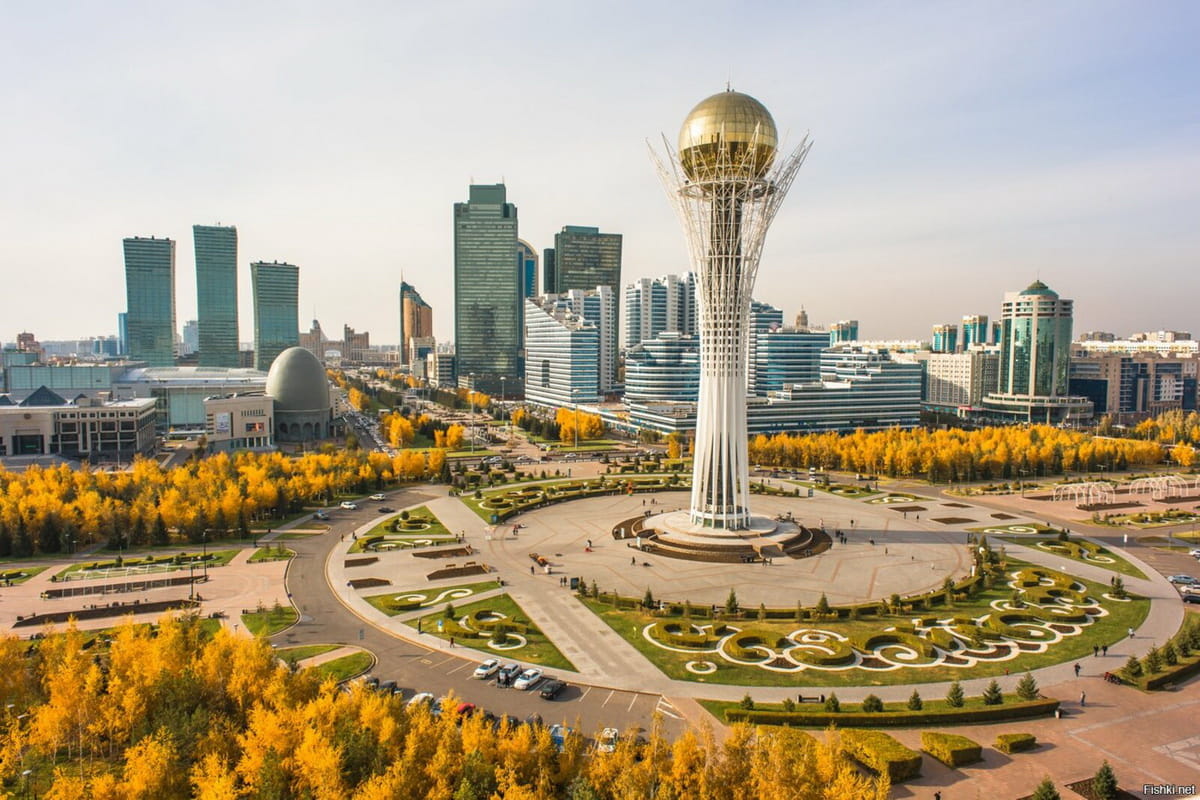In the heart of Central Asia lies Kazakhstan, a land of untold stories and remarkable facts. This country, larger than Western Europe, has been a crossroads of civilizations for centuries. It’s where the ancient city of Otrar, once visited by Marco Polo, thrived and where the nomadic Scythians roamed.
Kazakhstan is also a modern innovator – it launched the first man, Yuri Gagarin, into space from Baikonur in 1961. Discover a fascinating blend of the past and present with these fun facts about Kazakhstan, revealing a nation rich in history, culture, and innovation.
1. Astana: A Capital City with a Unique History
Astana became Kazakhstan’s capital in 1997, a strategic shift from Almaty. Born as a fortress in 1830, it’s a symbol of post-Soviet Kazakhstan’s ambition. This city, designed by renowned architect Kisho Kurokawa, reflects a unique blend of Asian and Western designs.
Astana’s rapid transformation, with landmarks like the 97-meter-tall Bayterek Tower, mirrors Kazakhstan’s own journey towards a modern, dynamic future.
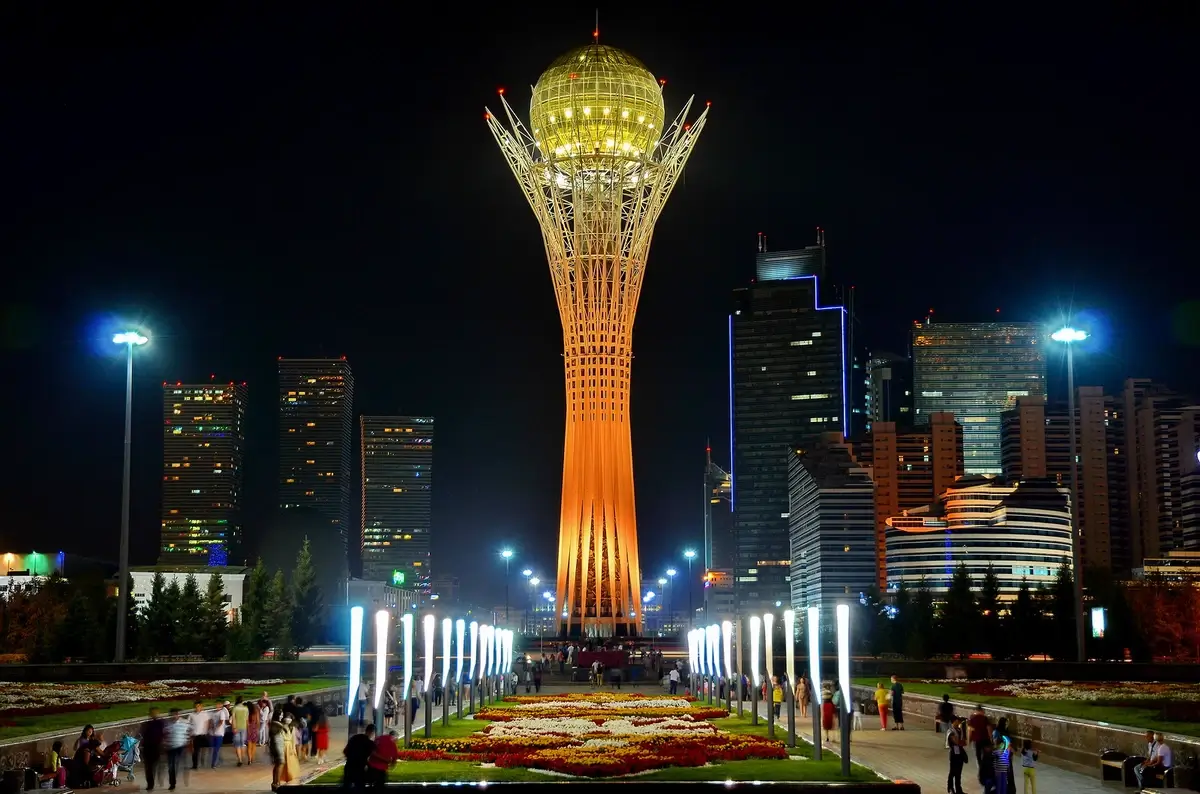
Image: tourstokazakhstan.com
2. Baikonur Cosmodrome: Launching into Space History
Baikonur Cosmodrome, established in 1955, is a historic pillar in space exploration. It was from here that Sputnik 1, the first artificial satellite, was launched in 1957, marking the start of the space age. Yuri Gagarin’s 1961 mission from Baikonur made him the first human in space.
Baikonur is still active, serving as a symbol of Kazakhstan’s lasting legacy in the space race.
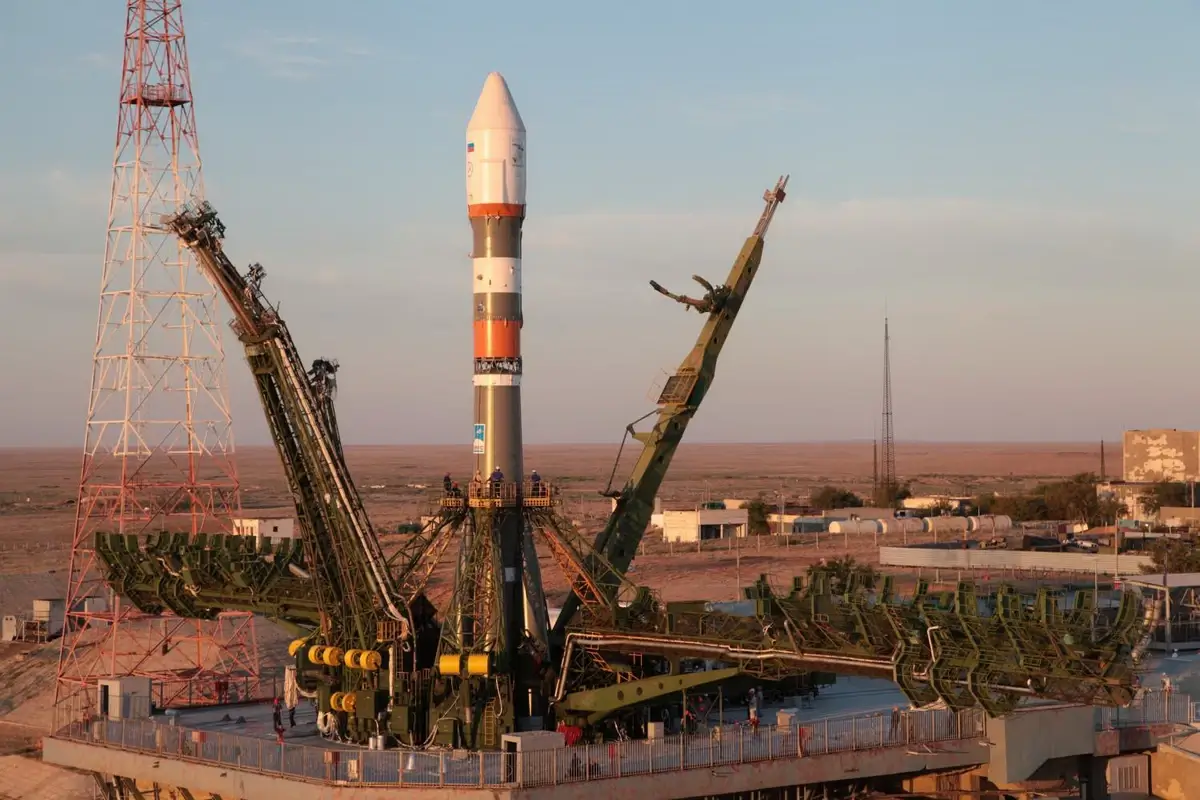
Image: caspiannews.com
3. The Vastness of the Kazakh Steppe
Covering over 800,000 square kilometers, the Kazakh Steppe is one of Earth’s largest dry plains. This steppe has been a life-source for nomadic tribes, like the Scythians in 800 BCE and later the Kazakhs.
It’s a region of ecological importance, home to unique fauna like the endangered saiga antelope. The steppe’s role in the ancient Silk Road highlights its historical significance in global trade.

Image: wikivoyage.org
4. Apple’s Ancestral Home: The Wild Apples of Almaty
Almaty, known as the ancestral birthplace of apples, is home to the Malus sieversii, the wild ancestor of modern apples. Genetic research shows these wild apples in Kazakhstan’s Tien Shan mountains are the source of the fruit’s vast genetic diversity.
These forests are crucial for apple cultivation worldwide, offering a genetic pool essential for developing new varieties and maintaining the health of global apple crops.
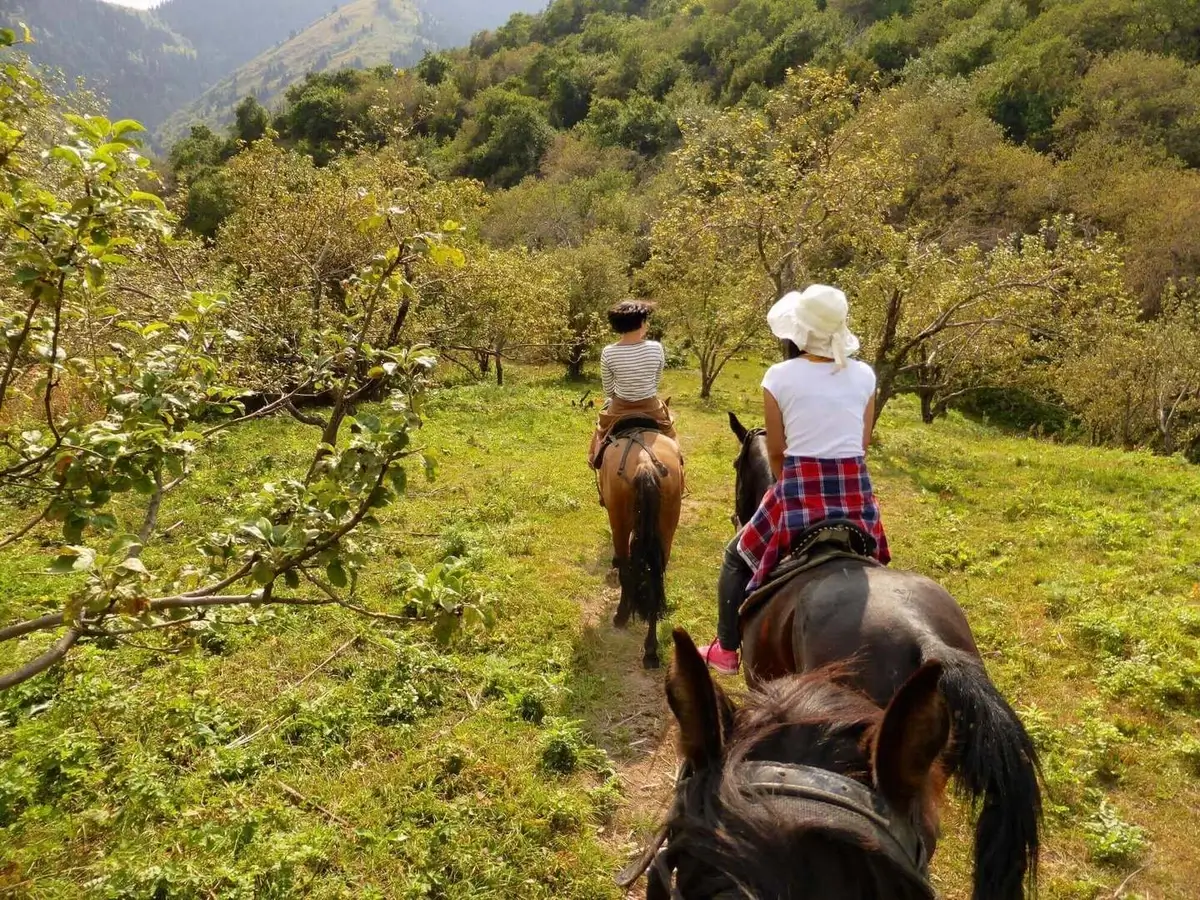
Image: kalpak-travel.com
5. The Ancient Silk Road: Kazakhstan’s Historic Trade Routes
Kazakhstan was a pivotal region in the ancient Silk Road, the network of trade routes connecting East and West from the 2nd century BCE to the 18th century. Cities like Otrar, Taraz, and Almaty thrived as trading hubs, where merchants exchanged silk, spices, and ideas. This period fostered a blend of cultures and religions, shaping Kazakhstan’s unique cultural mosaic.
The Silk Road’s impact on Kazakhstan’s development is a testament to the country’s historical significance in global trade and cultural exchange.
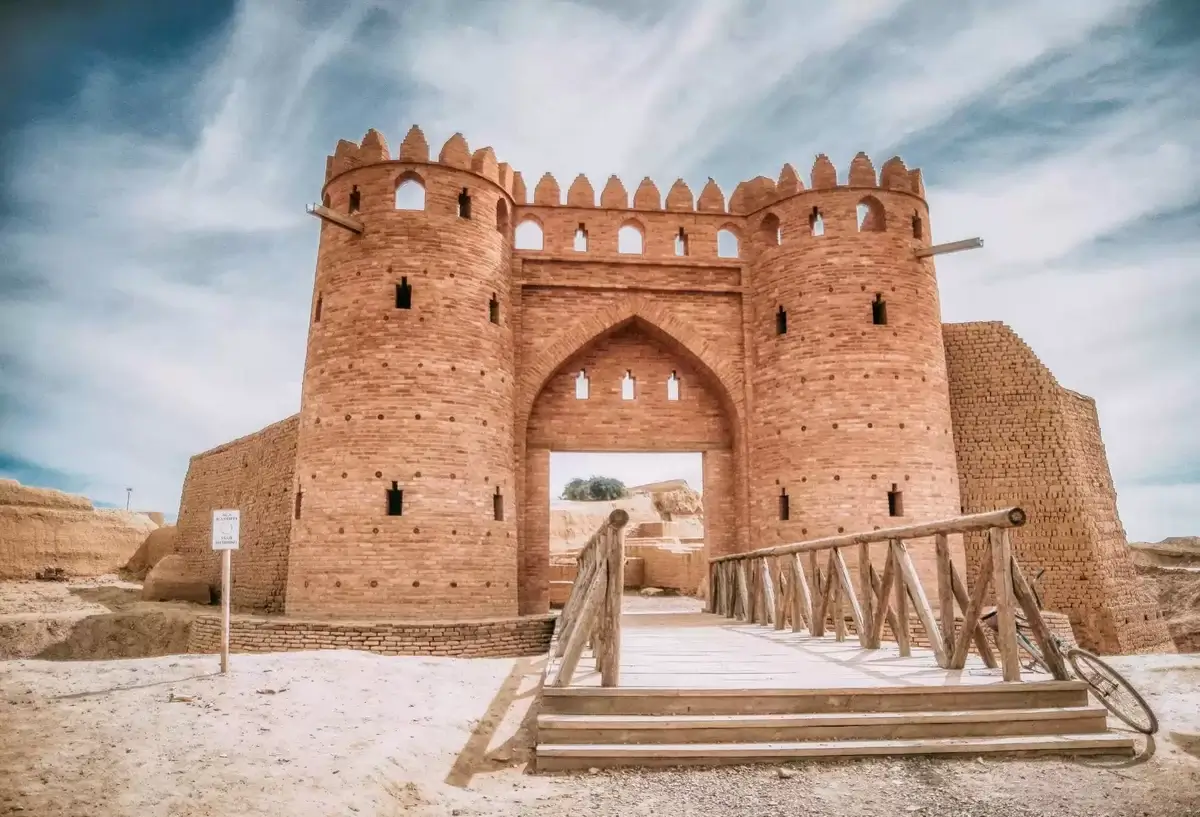
Image: indyguide.com
6. Kazakhstan’s Rich Oil Reserves and Economic Impact
Kazakhstan is Central Asia’s largest economy, largely due to its vast oil reserves. The nation holds the world’s 12th largest oil reserves, with the Tengiz and Kashagan fields being among the largest.
Since independence in 1991, oil exports have significantly boosted Kazakhstan’s economy, contributing to modern infrastructure and rising living standards. The country’s future economic strategy involves diversifying away from oil dependency, aiming for sustainable growth.

Image: thethirdpole.net
7. Traditional Kazakh Cuisine: A Culinary Journey
Kazakh cuisine reflects the nation’s nomadic past, offering a rich palette of flavors and dishes. Staples like beshbarmak, made with boiled meat and noodles, and kumis, a fermented mare’s milk, are central to Kazakh culinary identity. These dishes, often prepared during traditional gatherings and festivals, provide a glimpse into Kazakhstan’s social and cultural fabric.
The nomadic lifestyle has significantly influenced the culinary traditions, emphasizing meat, dairy, and hearty dishes suited for the harsh climate.
8. The Golden Man: An Icon of Kazakh Heritage
The Golden Man, discovered in 1969 in the Issyk kurgan, is a symbol of Kazakhstan’s rich history. This ancient Scythian warrior, dressed in gold-plated armor, dates back to the 4th or 3rd century BCE.
The find, consisting of over 4,000 gold pieces, reflects the craftsmanship and wealth of the Scythian culture. It has become a national symbol, embodying Kazakhstan’s historical roots and the legacy of its early inhabitants.
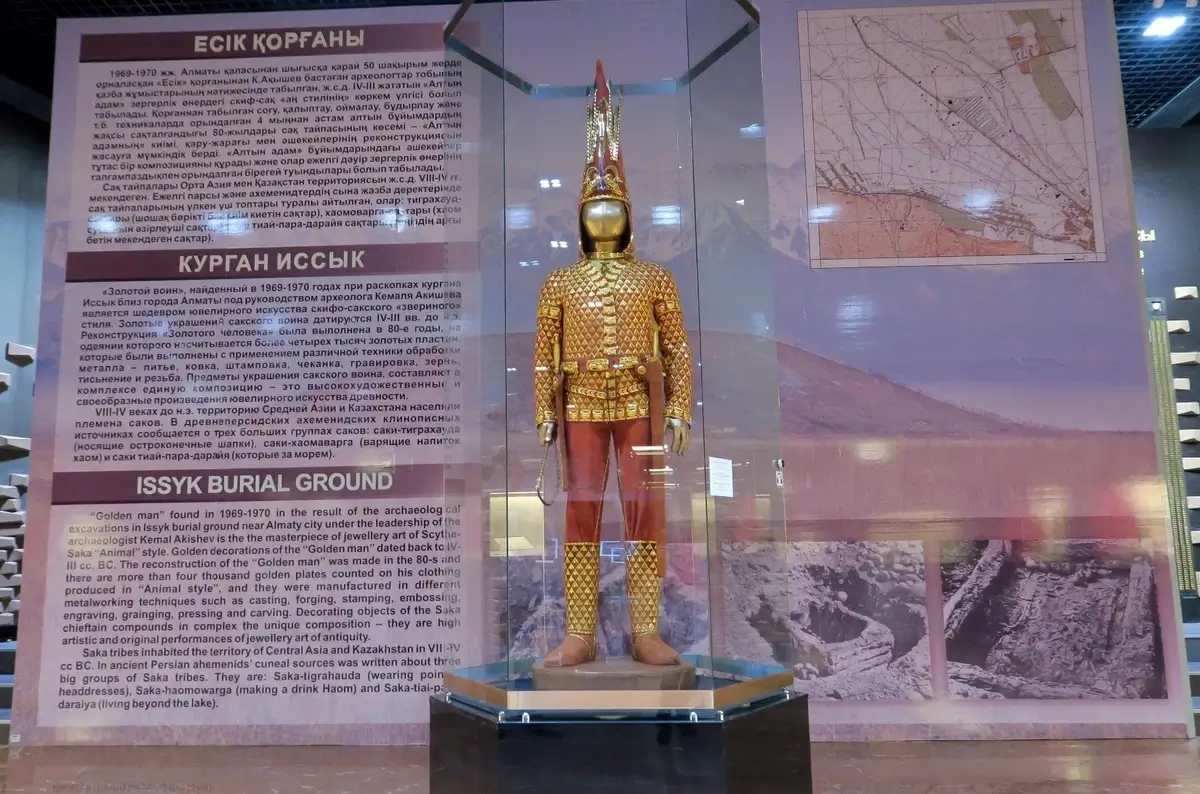
Image: dailysabah.com
9. Kazakhstan’s Nomadic Heritage and Culture
Kazakhstan’s culture is deeply rooted in its nomadic heritage, which has shaped its social structure, traditions, and lifestyle. The nomadic lifestyle, characterized by seasonal migrations, fostered a strong connection with nature and a sense of community.
Traditional yurts, portable homes, and practices like eagle hunting and horseback riding are enduring aspects of this heritage. Today, these traditions are celebrated in festivals and events, keeping the nomadic spirit alive in modern Kazakhstan.

Image: marakandatravel.asia
10. Lake Balkhash: One of the World’s Largest Lakes
Lake Balkhash, located in southeastern Kazakhstan, is one of the largest lakes in the world, spanning over 16,400 square kilometers. It’s unique for being half freshwater and half saline — the western part of the lake is fresh, while the eastern part is salty.
The lake plays a critical role in the region’s ecosystem and is a vital resource for local fisheries. The Ili River, its primary inflow, is crucial for maintaining its delicate ecological balance. Lake Balkhash’s biodiversity includes several endemic fish species, making it a significant site for biological diversity.
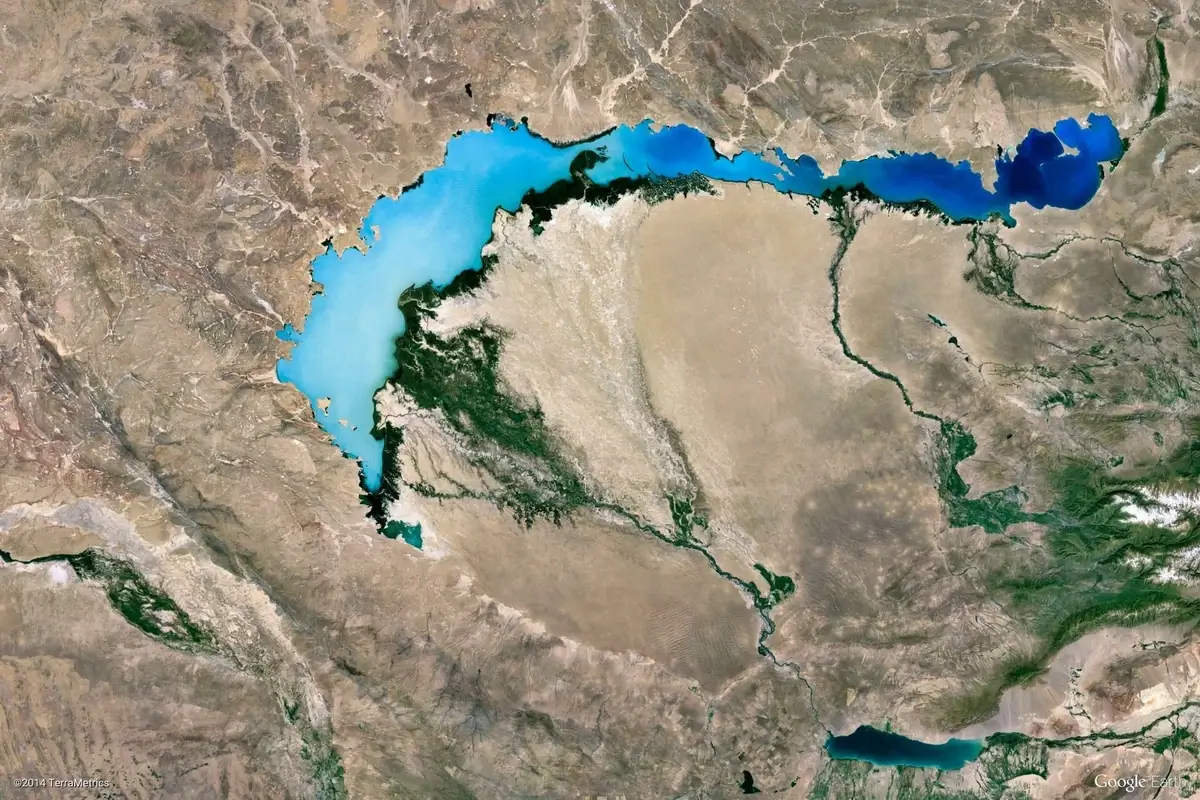
Image: pinimg.com
11. The Legendary Aral Sea: A Story of Environmental Change
Once the fourth largest lake in the world, the Aral Sea has dramatically shrunk since the 1960s, a stark example of environmental degradation. Soviet irrigation projects diverted the Amu Darya and Syr Darya rivers, drastically reducing the sea’s size and splitting it into separate parts.
This ecological disaster has led to significant climate changes in the region and adversely affected local communities. Efforts are underway to restore parts of the sea, but the Aral Sea’s fate remains a powerful lesson in environmental management.

Image: Britannica
12. Kazakh Yurts: Traditional Living in the Steppe
The yurt, a portable, round tent covered with skins or felt, is central to Kazakh nomadic culture. These structures, designed for the nomadic lifestyle, are easily dismantled and transported. Yurts are ingeniously constructed to withstand the harsh steppe climate, with a wooden frame and a felt cover providing insulation.
The interior of a yurt is traditionally arranged according to social customs, reflecting the nomadic values of hospitality and community. Yurts remain a symbol of Kazakh cultural identity and are still used in rural areas and during cultural celebrations.
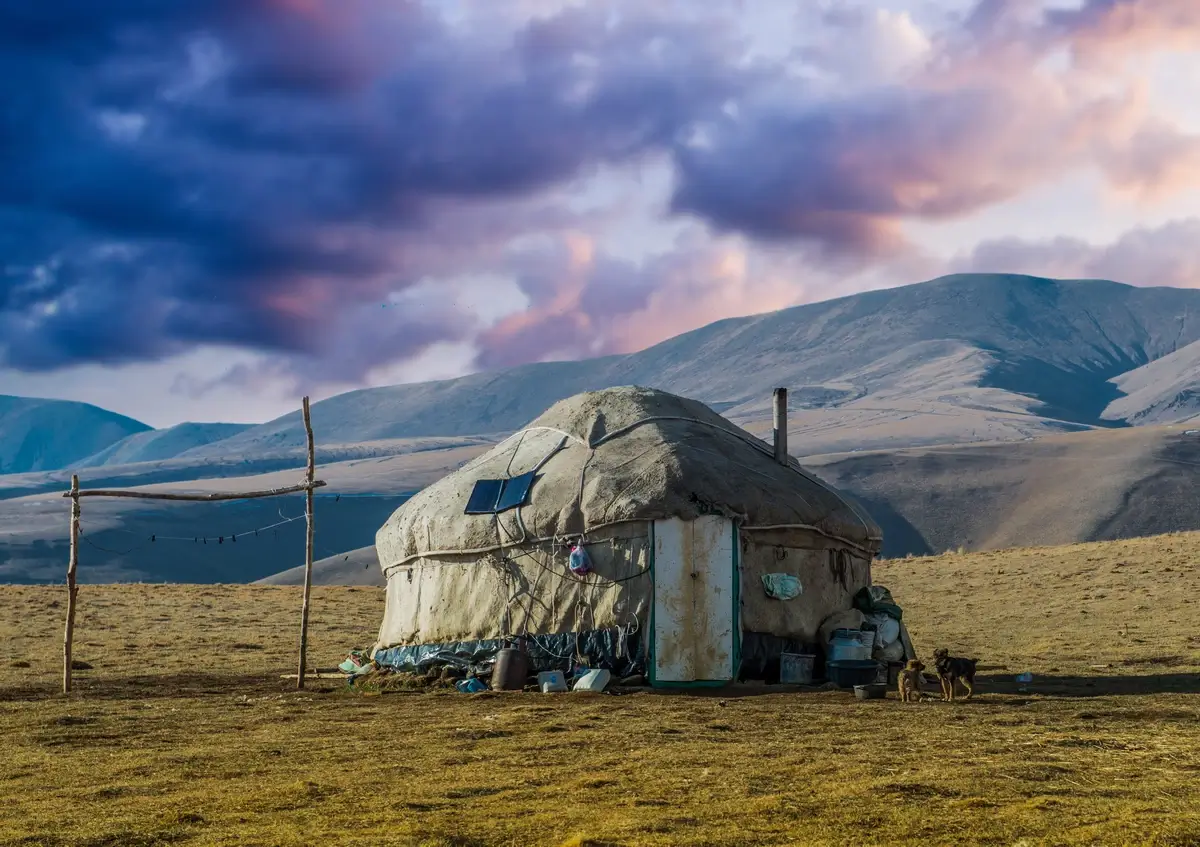
Image: visitworldheritage.com
13. Kazakhstan’s Diverse Wildlife: From Snow Leopards to Saigas
Kazakhstan’s diverse ecosystems are home to a wide range of wildlife, including rare species like snow leopards and saiga antelopes. The country’s vast steppes, mountains, and forests provide habitats for over 500 bird species, 178 mammal species, and numerous reptiles and amphibians.
Conservation efforts are vital for protecting these species, particularly for the critically endangered saiga, known for its distinctive bulbous nose. Kazakhstan’s commitment to wildlife conservation is exemplified in its network of nature reserves and national parks.
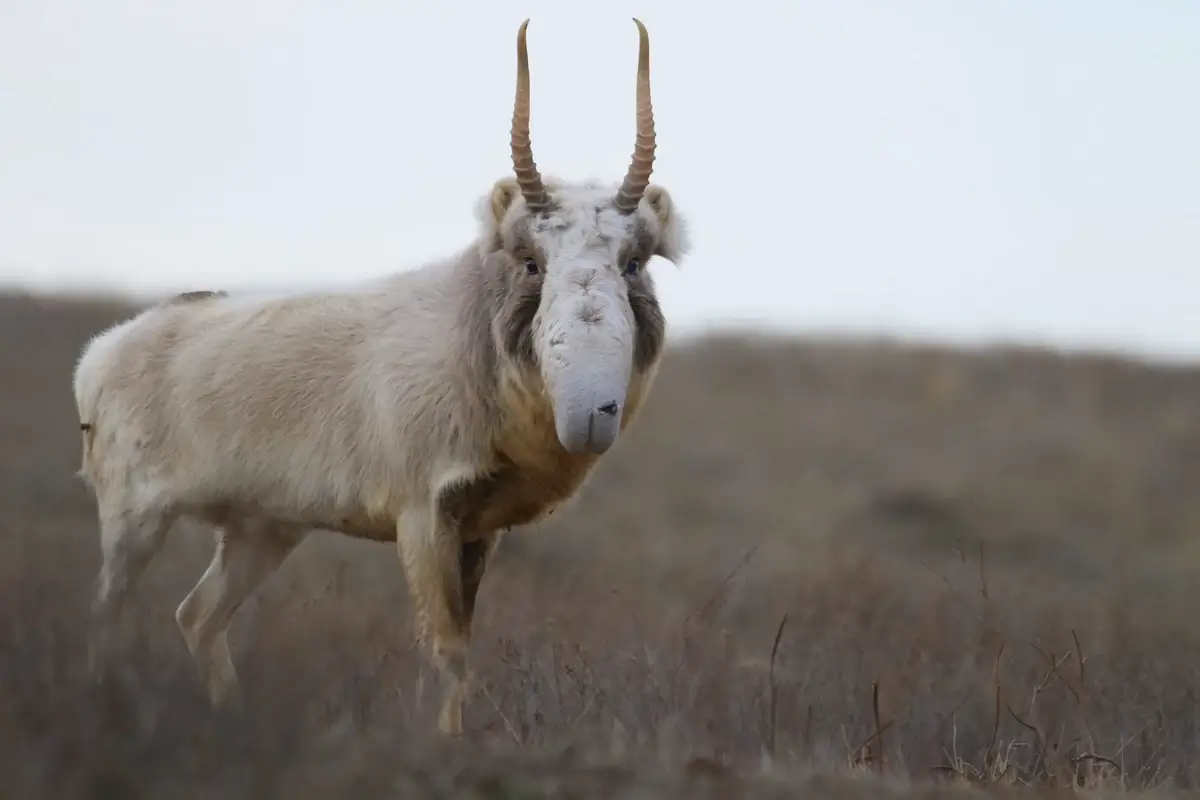
Image: altyndala.org
14. Kazakhstan’s Role in World War II
During World War II, Kazakhstan played a crucial role as part of the Soviet Union. The country became a refuge for hundreds of thousands of evacuees and industries relocated from the war’s frontlines. Kazakh soldiers fought valiantly in the Red Army, with many receiving high military honors.
Kazakhstan also contributed significantly to the Soviet war effort through its substantial mineral and grain production. This period marked a significant chapter in Kazakhstan’s history, showcasing its resilience and contribution to the Allied victory.

Image: dissertationreviews.org
15. Falconry in Kazakhstan: An Ancient Practice
Kazakh “berkutchi,” the art of hunting with Golden Eagles, dates back to the 7th century. Integral to nomadic culture, it involves meticulous training of these majestic birds, symbolizing strength in Kazakh tradition.
Recognized by UNESCO for its cultural value, this practice showcases a profound bond between the Kazakh people and the natural world.
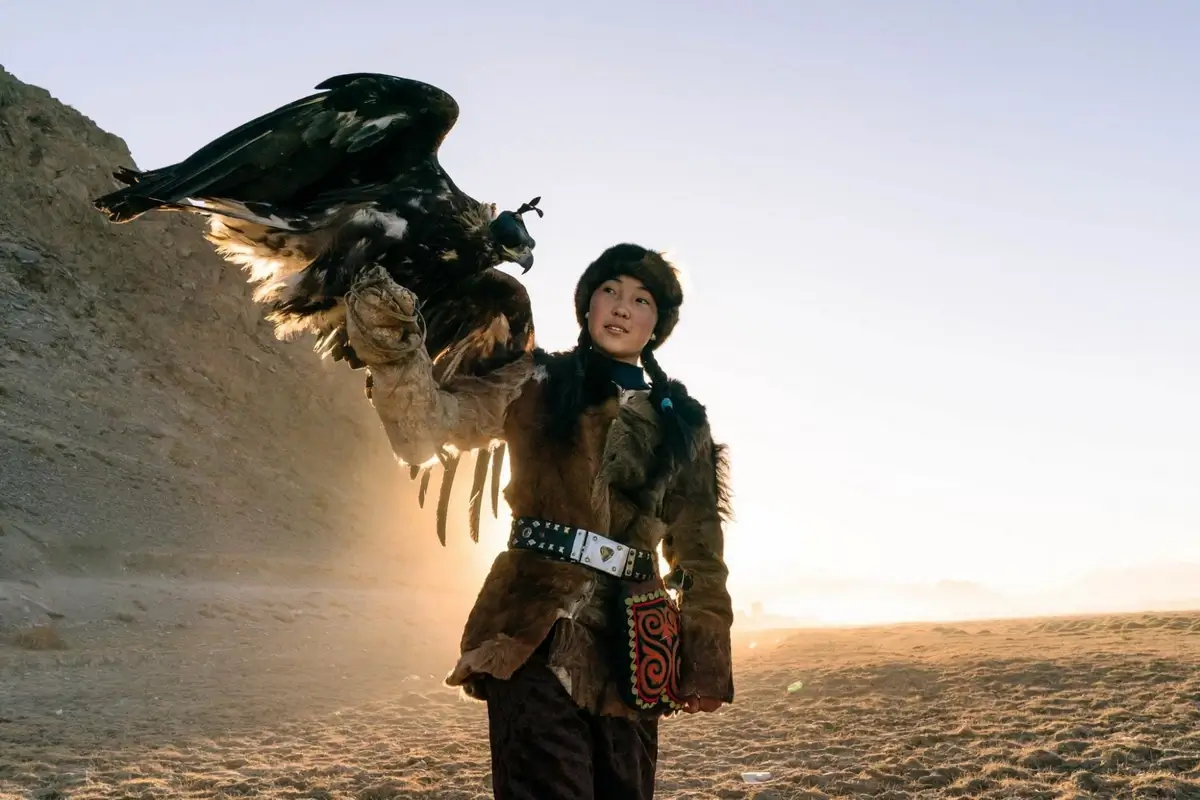
Image: nyt.com
16. Kazakh Film Industry: A Growing Cultural Export
The Kazakh film industry, though relatively young, has made significant strides on the international stage. It gained global recognition with films like “Nomad” (2005) and “Tulpan” (2008), which showcase Kazakhstan’s rich history and unique landscapes.
The country’s film industry is known for blending traditional stories with contemporary themes, offering a window into Kazakh society and culture. The government’s support, through festivals and investments, is fostering a growing cinema culture, positioning Kazakhstan as a promising hub for filmmaking in Central Asia.

A scene from the film “Tulpan”, 2008. Image: IMDb
17. The Tien Shan Mountains: Kazakhstan’s Majestic Peaks
The Tien Shan Mountains, extending across Kazakhstan’s southeastern region, are among the largest mountain ranges in Central Asia. With peaks like Khan Tengri and Pobeda Peak, some over 7,000 meters high, the range is a paradise for mountaineers and nature lovers.
These mountains are also crucial for their biodiversity, housing rare species like the snow leopard. The Tien Shan’s glaciers are significant water sources for the region, playing a vital role in both local ecology and human livelihoods.
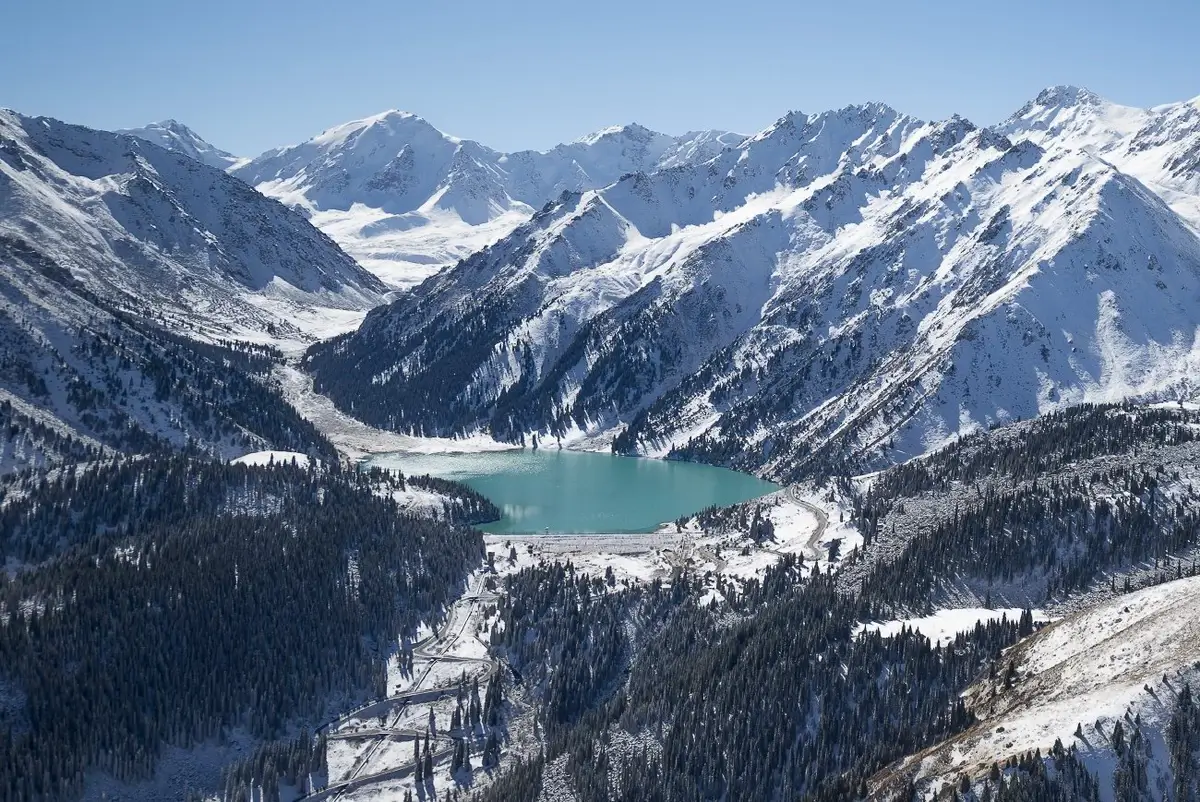
Image: aboutkazakhstan.com
18. The Mystery of the Singing Dunes
The Singing Dunes, located in the Altyn-Emel National Park, are a natural wonder of Kazakhstan. These sand dunes, reaching up to 150 meters in height, are known for their peculiar phenomenon: they emit a low rumbling sound in certain weather conditions. This sound, resembling an organ melody, is caused by the movement of sand under specific circumstances.
The mystery and beauty of the Singing Dunes attract tourists and researchers alike, making it a unique natural attraction in Kazakhstan.
19. The Historic Baikonur Town: Life Beside the Cosmodrome
Adjacent to the Baikonur Cosmodrome lies the town of Baikonur, an area leased by Russia but integral to Kazakhstan’s space history. Established in 1955, the town was a secret location, not marked on maps until 1995. It has a unique culture shaped by its space legacy, with streets named after space missions and astronauts.
Living in Baikonur is living alongside history, where residents witness rocket launches and are part of a community deeply connected to the space industry.
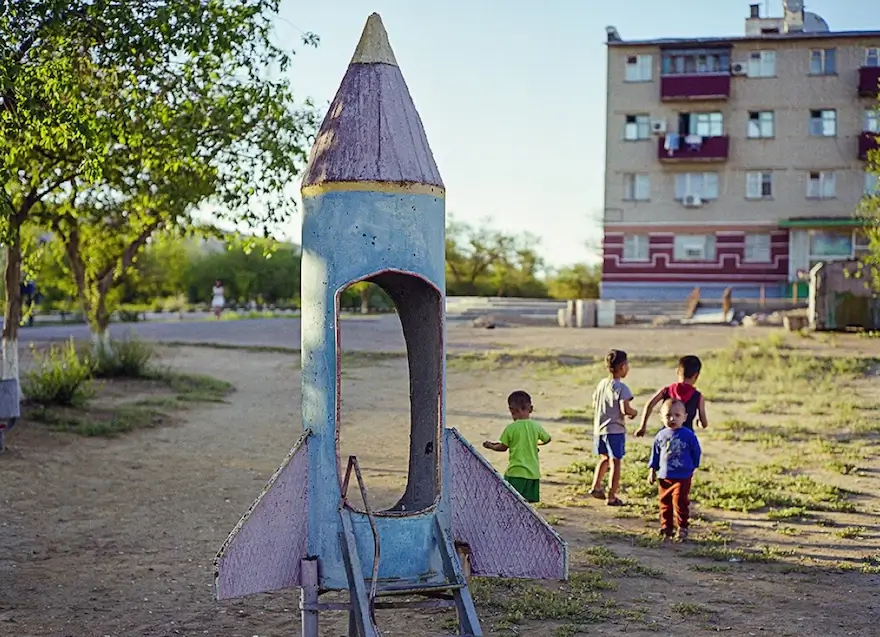
Image: killscreen.com
20. Kumis: The Traditional Kazakh Fermented Mare’s Milk
Kumis, a traditional Kazakh beverage, is made by fermenting mare’s milk. This slightly alcoholic drink has been a staple in the Kazakh diet for centuries, valued for its nutritional and medicinal properties. Kumis is traditionally prepared in a “saba,” a leather bag, where it is churned to achieve the desired fermentation level.
Consumed mainly in the spring and summer, kumis is not just a beverage but a symbol of Kazakh hospitality and a vital part of nomadic life, offering a unique taste of the Kazakh steppe.

Image: gov.kz
21. The Historic City of Turkestan
Turkestan, over 1500 years old, is one of Kazakhstan’s most important historical and cultural centers. It was a significant city on the Silk Road, known especially for the Mausoleum of Khoja Ahmed Yasawi, a prominent Sufi spiritual leader of the 12th century.
This UNESCO World Heritage site, commissioned by Timur in the late 14th century, is an architectural masterpiece and a pilgrimage site. Turkestan’s rich history mirrors the diverse cultural and religious influences that have shaped the region over centuries.
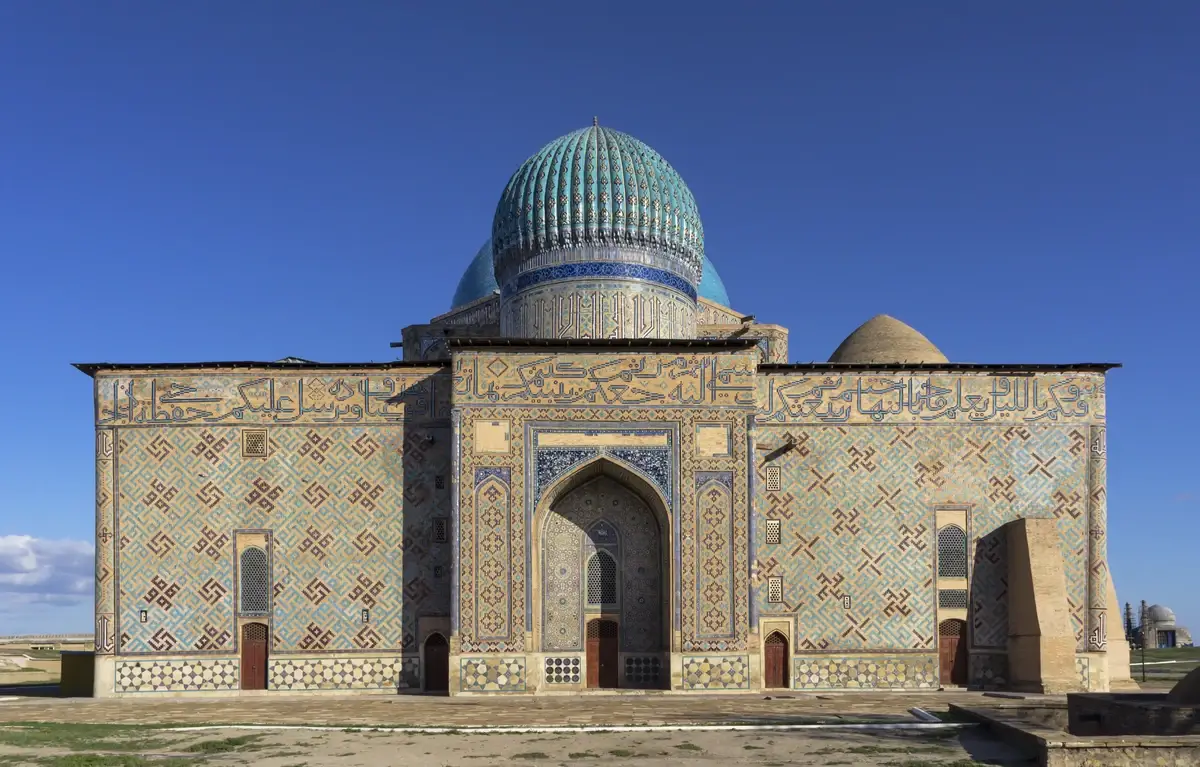
Image: Wikimedia Commons
22. Kazakhstan’s Contribution to Literature and Poetry
Kazakhstan has a rich literary heritage, with its roots in oral traditions and epic poetry. Abai Kunanbaiuly, a 19th-century poet, philosopher, and composer, is a towering figure in Kazakh literature. His work, focusing on themes of wisdom, humanity, and the quest for truth, has been instrumental in shaping modern Kazakh identity.
The 20th century saw a flourishing of Kazakh literature, with writers like Mukhtar Auezov and Gabit Musrepov contributing significantly to the country’s cultural landscape.
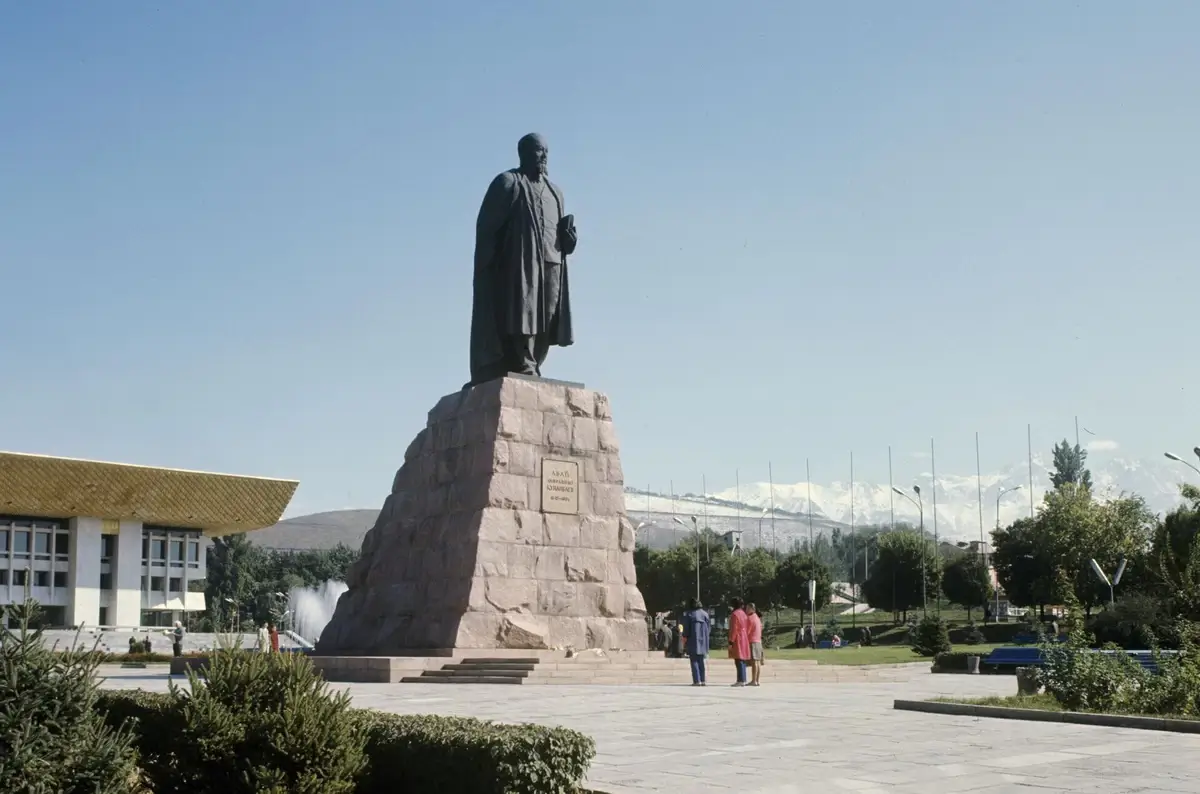
Image: sputnik.kz
23. The Caspian Sea: A Shared Natural Wonder
The Caspian Sea, the world’s largest inland body of water, borders Kazakhstan to the west. This unique ecosystem is home to a wide variety of wildlife, including the critically endangered Caspian seal. The sea is also a crucial economic resource for Kazakhstan, rich in oil and natural gas reserves. Its shores are dotted with important ports like Aktau, connecting Kazakhstan to international trade routes.
The Caspian Sea’s environmental and economic significance make it a key asset for the region.

Image: remotelands.com
24. Kazakhstan’s Flourishing Pop Music Scene
Kazakhstan’s pop music scene has seen a significant rise in popularity, both nationally and internationally. Artists like Dimash Kudaibergen have gained global recognition, showcasing the country’s musical talent on the world stage. The blend of traditional Kazakh music elements with modern pop has created a unique sound, resonating with a wider audience.
Music festivals and competitions in Kazakhstan are increasingly attracting international attention, highlighting the country’s growing influence in the global music industry.
25. The Sharyn Canyon: Kazakhstan’s Grand Canyon
The Sharyn Canyon, often referred to as Kazakhstan’s Grand Canyon, is a stunning natural formation in the Sharyn National Park. Stretching over 150 kilometers, the canyon is approximately 12 million years old and offers a breathtaking landscape of unique rock formations and vivid colors. It’s a testament to the power of natural erosion by the Sharyn River.
The Valley of Castles, the most famous part of the canyon, is renowned for its towering rock pillars and dramatic vistas, making it a popular destination for tourists and nature enthusiasts.
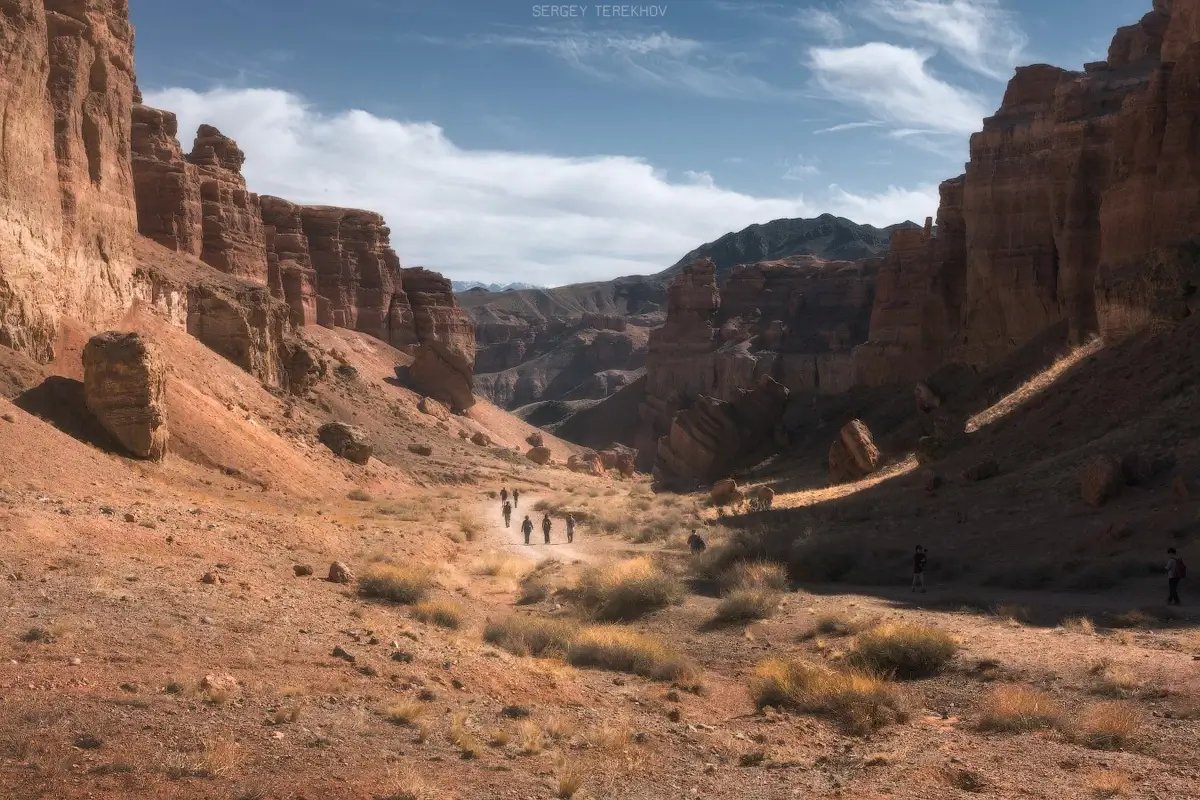
Image: aboutkazakhstan.com
26. Kazakhstan’s Paleontology: Remarkable Jurassic Discoveries
Kazakhstan’s Karatau mountains are renowned for their rich Jurassic-period fossils. The 2015 discovery of Saurornitholestes sullivani, a notable theropod dinosaur, in this region, has provided significant insights into the diversity of predatory dinosaurs.
These findings, critical to understanding dinosaur ecosystems, highlight Kazakhstan’s pivotal role in paleontological research.
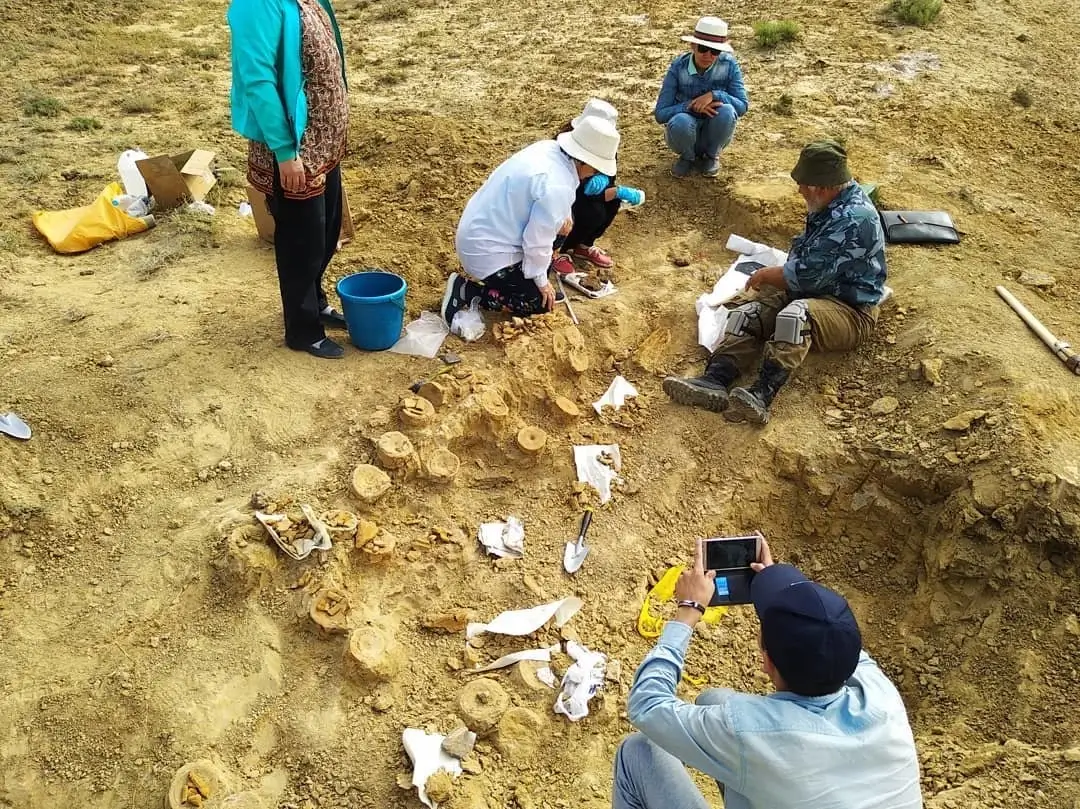
Image: arnapress.kz
27. The Big Almaty Lake: A Scenic Marvel
The Big Almaty Lake, nestled in the Tien Shan Mountains, is a natural alpine reservoir known for its stunning, vivid blue waters. Located just 25 kilometers south of Almaty, this glacial lake sits at an elevation of about 2,500 meters.
The lake’s color varies with the seasons and time of day, making it a photographer’s paradise. It also serves as a major water supply for the region and is a critical habitat for a variety of wildlife, underscoring its ecological importance.
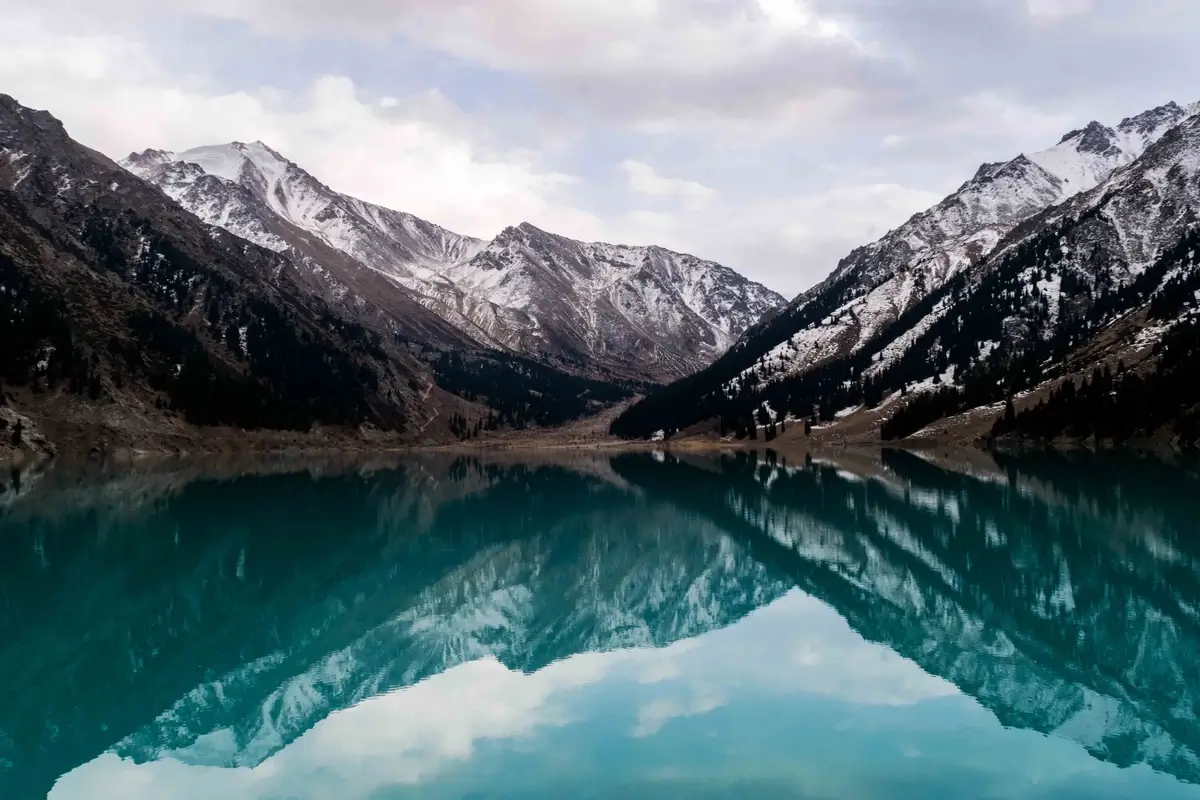
Image: visitmekazakhstan.com
28. Kazakh Handicrafts: Preserving Ancient Arts
Kazakh handicrafts, rich in history and tradition, are an integral part of the nation’s cultural heritage. Skills like carpet weaving, felt making, and silver jewelry crafting have been passed down through generations. These crafts are not just artistic expressions but also reflect the Kazakh people’s close relationship with their environment and history.
Handicrafts like “shyrdaks” (felt carpets) and traditional Kazakh clothing are adorned with symbolic patterns, each telling a story or representing a facet of nomadic life.
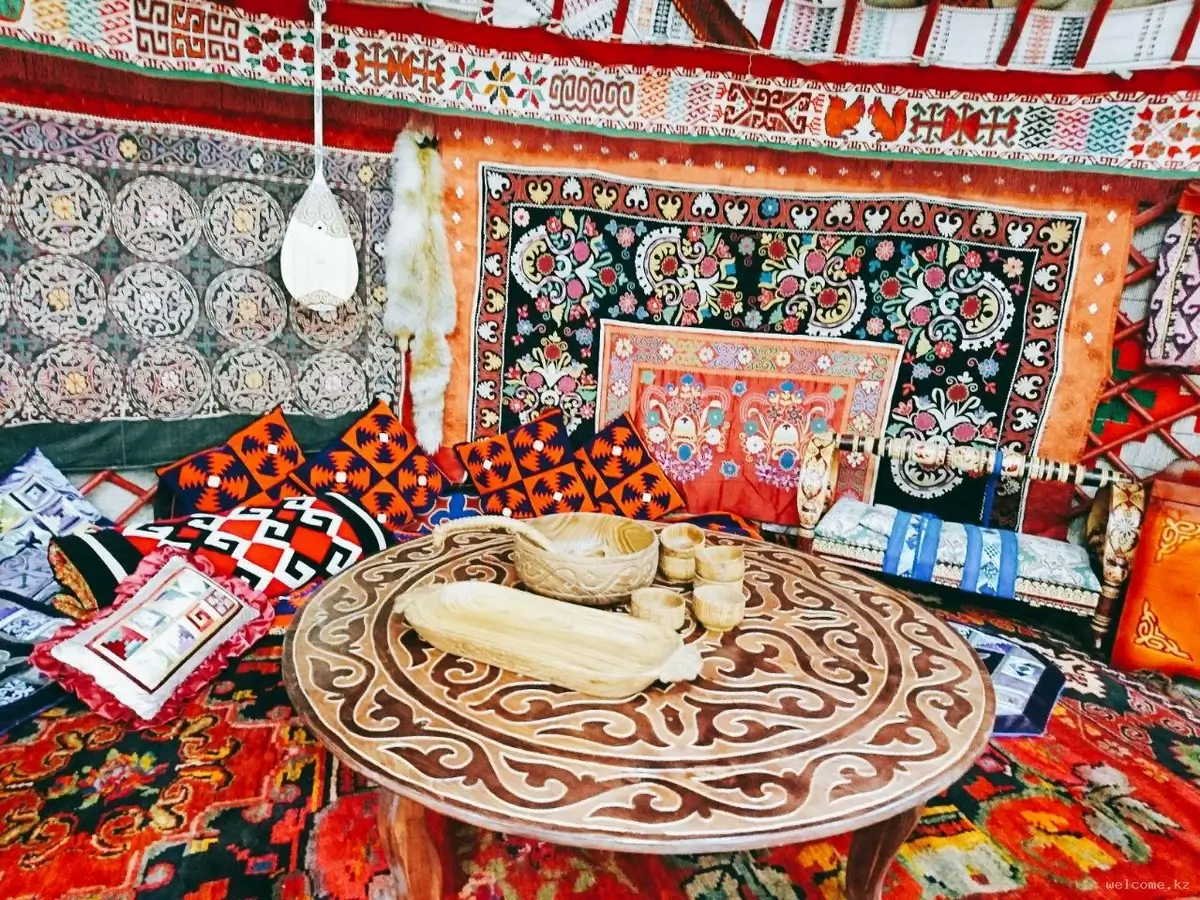
Image: welcome.kz
29. The Aitysh Art: The Tradition of Kazakh Improvisational Poetry
The tradition of Aitysh, or poetic dueling, is a cornerstone of Kazakh oral literature. This art form involves two poets, or “akyns,” improvising verses in a lyrical battle, showcasing their wit, wisdom, and mastery of language. Aitysh reflects the nomadic lifestyle, where oral storytelling was a key form of entertainment and communication.
These poetic duels are not just entertainment but a display of intellectual prowess and cultural knowledge, making them a revered cultural practice in Kazakhstan.
30. Kazakhstan’s Underground Mosques: Spiritual and Architectural Gems
Kazakhstan’s underground mosques, such as the 18th-century Beket-Ata near the Caspian Sea, are unique spiritual sites. Carved into cliffs, these mosques offer serene worship spaces, blending spirituality with ingenious ancient architecture.
Their natural ventilation and lighting exemplify adaptability to the harsh Kazakh landscape.
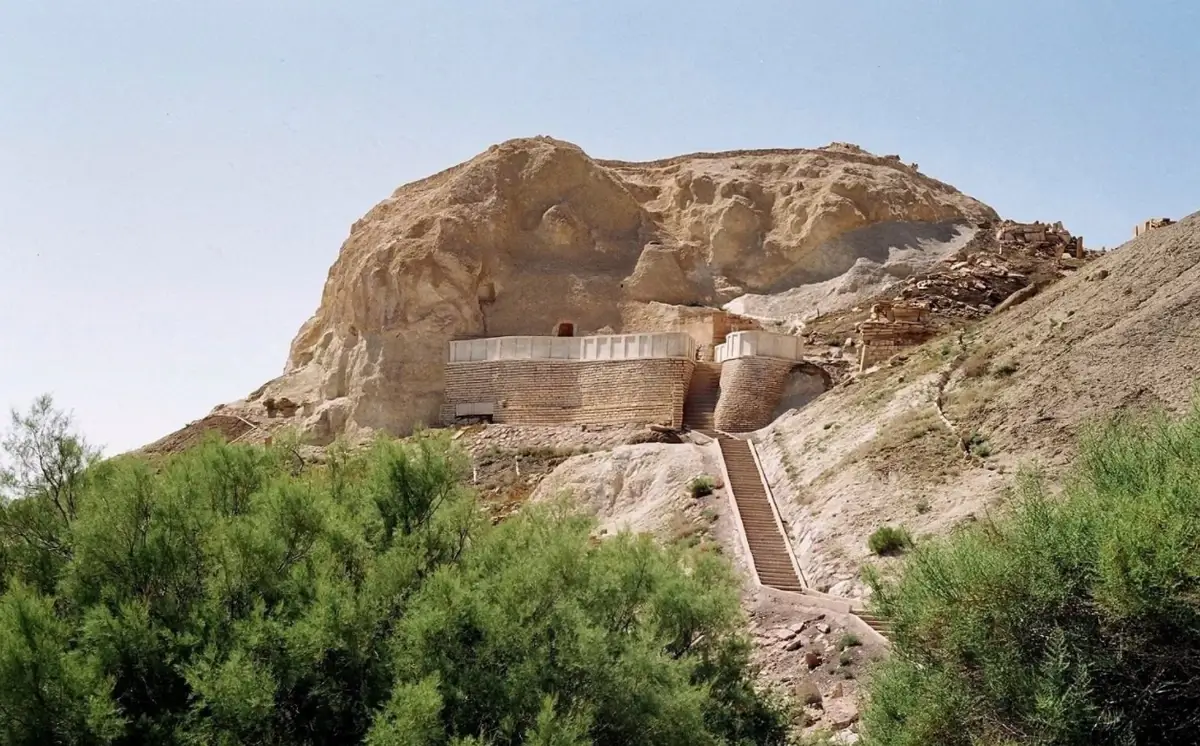
Image: qazaqstan3d.kz
31. The Ancient City of Otrar: A Historical Treasure
Otrar, once a thriving city on the Silk Road, holds a prominent place in Kazakhstan’s history. Dating back to the 1st century AD, it was a major commercial and cultural center until its decline in the 15th century. Otrar is famously known for its resistance against Genghis Khan’s Mongol invasion in the early 13th century.
The city’s ruins, located near the Syr Darya river, offer invaluable insights into ancient urban planning, architecture, and the lifestyle of the Silk Road era. Excavations have unearthed artifacts that depict the rich history and cultural legacy of Otrar.

Image: qazmonitor.com
32. Kazakhstan’s Role in the Silk Road Revival
Kazakhstan is at the forefront of reviving the ancient Silk Road, now reimagined as the Belt and Road Initiative by China. This modern trade route aims to connect Asia with Europe and Africa through a network of railways, roads, and ports. Kazakhstan’s strategic location makes it a vital link in this initiative, with projects like the Khorgos Gateway enhancing its role as a key transit hub.
This modern Silk Road revival is expected to boost Kazakhstan’s economy and increase its global trade connectivity, reaffirming its historical role as a bridge between the East and West.

Image: sputnik.kz
33. The Unique Climate of Kazakhstan
Kazakhstan’s climate is as diverse as its landscape, ranging from arid and semi-arid in the steppes to polar in the high mountains. The country experiences extreme temperature variations, with hot summers and very cold winters, especially in the north. This climatic diversity supports a wide range of ecosystems, from the Caspian Sea’s wetlands to the alpine meadows of the Tien Shan Mountains.
Kazakhstan’s climate plays a crucial role in its agricultural practices, influencing the traditional nomadic lifestyle and modern farming techniques.
34. Kazakhstan’s Sporting Achievements and Heroes
Kazakhstan has a proud history in sports, excelling in areas like boxing, wrestling, and weightlifting on the international stage. The country made a significant mark in the Olympics, with athletes like weightlifter Ilya Ilyin and boxer Serik Sapiyev winning gold medals. Kazakhstan also hosts prestigious sporting events, such as the Asian Winter Games in 2011.
These achievements reflect the country’s commitment to sports development and the role of sports in national pride and identity.

Image: uww.org
35. Kazakh Hospitality: A Pillar of Culture
Hospitality is a cornerstone of Kazakh culture, deeply ingrained in the nomadic traditions of the Kazakh people. Guests are treated with the highest respect and are often presented with the best the household can offer, reflecting the values of generosity and kindness. Traditional customs like the “dastarkhan,” a spread of food and drink, exemplify this hospitality.
Such practices are not merely cultural rituals but are integral to the Kazakh way of life, symbolizing their openness, warmth, and community spirit.
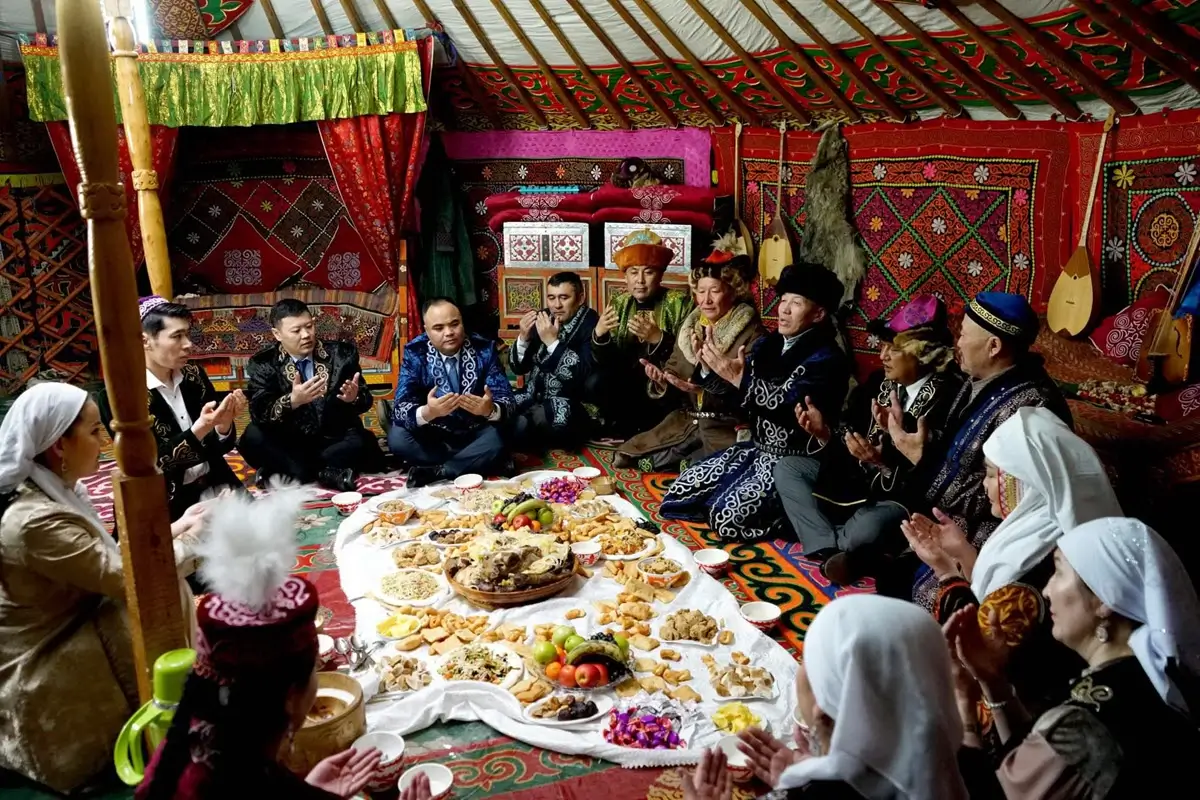
Image: teajourney.pub
FAQ
What is Kazakhstan best known for?
Kazakhstan is best known for its diverse cultural heritage and significant historical sites. It’s recognized for the Baikonur Cosmodrome, the world’s first and largest operational space launch facility. The country is also known for its vast steppes, rich traditions of nomadic life, and as the ancestral home of the apple, particularly in the region around Almaty.
What does Kazakhstan have the most of?
Kazakhstan has the largest land area of any landlocked country in the world. It’s also known for having one of the world’s largest reserves of oil, natural gas, and various minerals. Additionally, Kazakhstan is renowned for its extensive and diverse steppe terrain.
What is the old name of Kazakhstan?
Before its independence from the Soviet Union in 1991, Kazakhstan was known as the Kazakh Soviet Socialist Republic (Kazakh SSR). Historically, the Kazakh populated regions were referred to as the Kazakh Khanate or simply Kazakhia.
Why is Kazakhstan called Kazakhstan?
The name “Kazakhstan” originates from the ancient Turkic word “qaz,” meaning “to wander,” reflecting the nomadic lifestyle of the Kazakh people. The suffix “-stan” is Persian for “land of,” so Kazakhstan essentially means “Land of the Wanderers” in reference to the traditional nomadic culture of its inhabitants.
Who is the most famous person from Kazakhstan?
One of the most famous people from Kazakhstan is Gennady Golovkin, a professional boxer known for holding multiple middleweight world championships. Another notable figure is Dimash Kudaibergen, a singer who has gained international fame for his extraordinary vocal range and performances.
What is a unique tradition in Kazakhstan?
A unique tradition in Kazakhstan is the eagle hunting, known as “berkutchi.” This ancient practice involves training Golden Eagles to hunt small game and is deeply embedded in Kazakh culture, symbolizing the relationship between humans and nature, and reflecting the skills and traditions of the Kazakh nomadic lifestyle.
What is the mysterious place in Kazakhstan?
The Singing Dunes of Altyn-Emel National Park are considered one of Kazakhstan’s most mysterious places. These sand dunes emit a strange, singing sound when the wind moves the sand, creating an eerie and mystical atmosphere. The precise reason for this natural phenomenon is still a topic of scientific research and curiosity.
What is Kazakhstan’s unique food?
Beshbarmak is Kazakhstan’s unique and traditional dish. It’s a hearty meal made with boiled meat (often horse or lamb), homemade noodles, and a rich broth. Beshbarmak, which translates to “five fingers,” is so named because it’s traditionally eaten with one’s hands and is a staple at many Kazakh social gatherings.
Is Kazakhstan a beautiful country?
Yes, Kazakhstan is a beautiful country, known for its stunning natural landscapes that range from vast steppes and deserts to towering mountains and pristine lakes. The country’s diverse geography offers breathtaking views and is home to unique wildlife. Its blend of modern and historical architecture, along with its rich cultural heritage, adds to its beauty.


